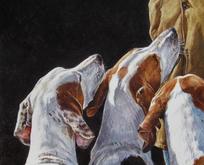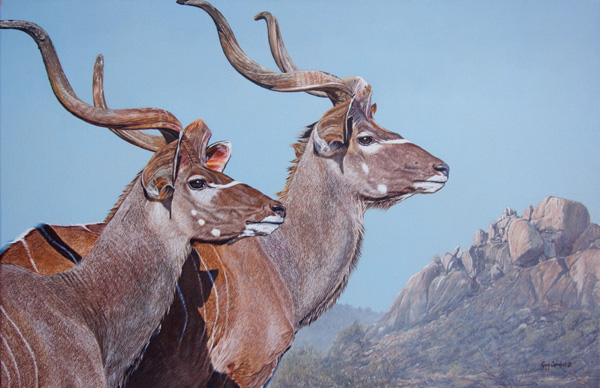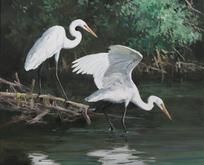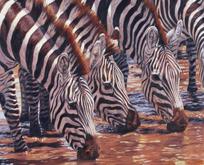
Guy Combes, b. 1971, Kenya, (Africa)
The son of renowned wildlife artist, Simon Combes. His art background came not just from his father, but an interest in exploring different forms of media and commercial application. His education included sculpture and design at college in England where he also majored in history of art. He returned to Kenya in 2001 and quickly rekindled his love for Africa and her wildlife, becoming involved in a number of conservation causes for which he now tirelessly campaigns, including Soysambu Conservancy - his Kenyan home-away-from-home - and preserving the rich mosaic of biodiversity in the Great Rift Valley.
In 2011 he completed five years as Artist in Residence at the Hiram Blauvelt Art Museum in New Jersey and this gave him the opportunity to reach an American audience, not only with his art, but also his experience of Africa. He is a signature member of both Artists for Conservation and the Society of Animal Artists, and his work has been both awarded and accepted into national museum shows, galleries and tours. He regularly revisits Kenya where he leads expeditions for artists and groups of conservation biology students from the US. He has lectured at zoos and universities on the East Coast including Yale and George Mason, with whom he has set up research programs at a facility he helped develop at Soysambu Conservancy, and now regularly gives art workshops in Canada, the US and England.
America is where he has found his niche, and the future for Guy will involve his time being spent working on artistic projects that bring awareness to international audiences, while developing his own field knowledge on the ground in Kenya in order to inform himself and the people he is so passionate about showing it to.
ARTIST STATEMENT
When I begin a painting, my intention is simple. I want to create an image that speaks from beyond the flat canvas surface, giving the viewer an impression of a window on to something spectacular. I believe the combination of realistically observed perspective, light, colour and texture can combine to duplicate the wonderful visual 'noise' of nature. But realism for me is about much more than the skilful rendering of what is actual; it is a way to distill and clarify my experiences into a relatable image and then infuse them with a narrative that goes far beyond the simple visual impression.
The possibilities are endless for a wildlife artist; all he needs to begin is to have an inspiring experience in nature and to feel an imperative to share that experience with a broader audience. It is compelling to think that my subject matter is a limitless resource, full of exciting possibilities within possibilities that I would need several lifetimes to describe. Ray Harris Ching once told me that when he successfully captures a subject on paper or canvas, it is an act of possession, and he feels as though the subject belongs to him from then on. My father, wildlife artist Simon Combes, had an important epiphany of his own; though he experienced the thrill of hunting in his youth, he later realised that could find just as much excitement and satisfaction from capturing wildlife on canvas. When I go out into nature, I never know what I might see; my process begins with the thrill of a wild (and often unexpected) encounter, develops through an intimate analysis and careful reconstruction back in the studio, and eventually resolves itself into a single image that captures that moment, not only for me, but for the viewer.
While my desire to capture my subject and share my enthusiasm for nature with others is the basis of my artistic motivation, I’m just as compelled, as a human being, to use my work to foster an understanding of the need to preserve the subject matter that I love. Having grown up in Kenya and spent much of my life there, I am inextricably tied to its land, flora, fauna, and people. Being a wildlife painter gives me a unique platform to share my concerns about the future of my homeland. I wish to reveal how my paintings, without ever being overtly political, are billboards promoting the celebration of wildlife and the importance of preserving it. In a world where we are bombarded with negativity, wildlife must be celebrated. When there is hope for the future of wild things and wild places, people work harder to protect them. My own experience in the world of conservation has opened my eyes to the unique opportunities for ordinary individuals to make a difference simply by being in the right place, at the right time, and with the right tools at their disposal. Whenever the preparation of my life’s work meets an opportunity to make a difference, I will always commit myself to doing whatever I can to be a voice for positive change.






